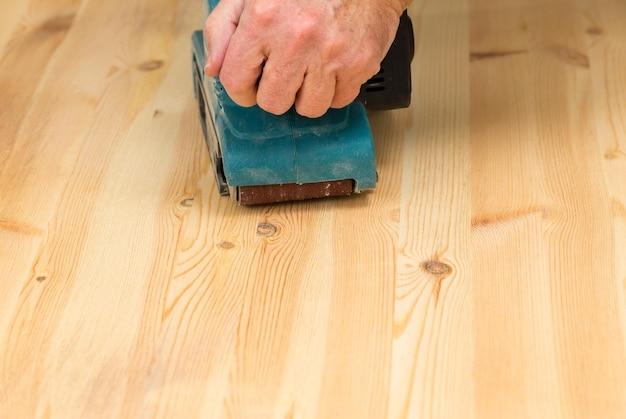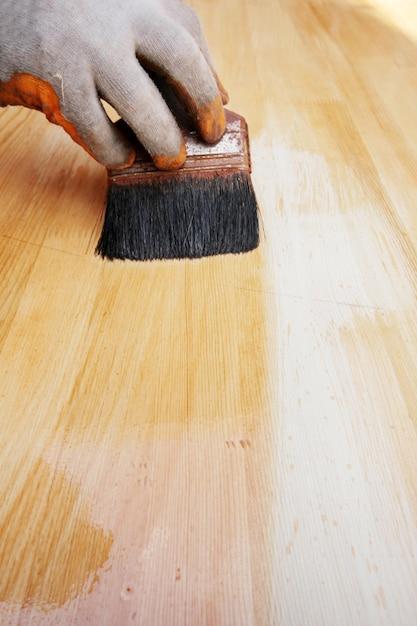If you’re working on a woodworking project or have recently applied spar urethane to a surface, you may find yourself needing to remove it. Spar urethane is a durable protective finish commonly used on outdoor wood surfaces, but it can become worn, scratched, or just need a refresh over time. In this comprehensive guide, we’ll explore the various methods and techniques for effectively removing spar urethane.
From understanding the difference between spar varnish and spar urethane to learning how to achieve a smooth and flawless finish, we’ll cover all the essential information you need to know. We’ll also address common questions like whether spar urethane can be sanded off, if mineral spirits or denatured alcohol can remove it, and whether you can apply epoxy over spar urethane. So, let’s dive in and discover how to remove spar urethane like a pro.
How to Get Rid of Stubborn Spar Urethane: A Step-by-Step Guide
Prepping for the Battle
So, you’ve got a stubborn spar urethane coating standing between you and the beautifully restored wood surface of your dreams. Fear not, my friend! With a little determination and some elbow grease, you’ll have that pesky finish running for the hills.
Before we dive headfirst into the spar urethane removing extravaganza, it’s crucial to take a moment to gear up like a true warrior. Don your protective goggles, grab some gloves that make you feel invincible, and ensure you are in a well-ventilated area. Now, let the battle begin!
Playing Dirty with Chemical Strippers
When it comes to vanquishing the mighty spar urethane, chemical strippers are a force to be reckoned with. Stripper products contain powerful chemicals that break down the finish, making it easier for you to say, “You’re outta here!”
Start by generously applying the stripper onto the surface using a brush or a clean cloth. Allow it to work its magic as you patiently wait, casting death stares at the stubborn coating. The duration may vary depending on the strength of your chosen product, so refer to the manufacturer’s instructions for guidance.
Once the stripper has worked its spell, grab a scraper and gently slide it across the surface, removing the old, defeated finish. Remember, a gentle touch is key don’t go charging in like a raging bull or you might damage the wood beneath.
Good Ol’ Sanding: A Trusty Sidekick
Sometimes, even after the chemical stripper has put up a valiant fight, remnants of the spar urethane may still cling on for dear life. This is when a trusty sidekick comes to the rescue: sandpaper.
Armed with sandpaper of various grits, start by sanding the surface with a coarse grit to remove any remaining traces of urethane. As you progress, switch to finer grits to smooth out the wood and prepare it for a fresh finish.
But wait, don’t rush headlong into the sanding frenzy! Take your time, be patient like a seasoned tortoise, and let the sandpaper do its job. Remember, a gentle and consistent sanding motion will bring you closer to the wood surface you desire.
Beware the Dust Bunnies
Ah, the joy of sanding – it can truly feel like an adventure into the wild, with dust bunnies lurking at every corner. To keep these pesky intruders at bay, equip yourself with a trusty vacuum cleaner and a damp cloth.
As you sand away, periodically pause for a cleanup session. Use the vacuum cleaner to suck up all the sawdust, and follow up with a wipe down using the damp cloth. Remember, a clean battlefield is essential for a victorious finish.
The Final Countdown
Congratulations, my resilient comrade! You’ve annihilated the spar urethane and breathed new life into your wooden masterpiece. But before you break out the champagne, there’s one last step to seal the deal – applying a fresh coat of finish.
Whether you choose a glossy varnish or a more subdued satin finish, make sure to follow the manufacturer’s instructions for application. Brush on the finish in even strokes, allowing each layer to dry before adding the next. Patience is a virtue here, my friend.
And voila! Step back, admire your handiwork, and revel in the victory over that formidable spar urethane. It may have been a tough battle, but you emerged triumphant, forever armed with the knowledge of how to conquer future finishes with finesse.
So go forth, brave warrior of wood restoration, and let your newfound skills shine in the face of any stubborn spar urethane that dares to cross your path!
FAQ: How To Remove Spar Urethane
Does Spar Urethane Scratch Easily
Spar urethane is known for its durability and resistance to scratches. However, like any protective finish, it is not completely immune to scratches. The good news is that spar urethane scratches are usually minor and can be easily fixed with some simple touch-up work.
Do You Sand the Last Coat of Spar Urethane
It is not necessary to sand the last coat of spar urethane, as sanding can affect the smoothness of the finish. However, if you notice any imperfections or rough spots, you can lightly sand the surface with fine-grit sandpaper to achieve a smoother finish.
How Do You Remove Polyurethane Without Sanding
Removing polyurethane without sanding can be a challenging task, but it’s not impossible. One effective method is to use a chemical paint stripper specifically designed for urethane. Apply the stripper to the surface, let it sit for the recommended time, and then scrape off the softened polyurethane using a plastic scraper.
Can I Sand Off Spar Urethane
Yes, you can sand off spar urethane if you want to completely remove the finish. Start by using coarse-grit sandpaper to remove the bulk of the spar urethane, then progress to finer-grit sandpaper for a smoother surface. Be sure to wear a mask, goggles, and work in a well-ventilated area when sanding.
Will Mineral Spirits Remove Spar Urethane
Yes, mineral spirits can effectively remove spar urethane. Simply dampen a cloth with mineral spirits and gently rub the surface until the spar urethane starts to dissolve. However, be cautious when using mineral spirits, as it is a flammable substance, and proper safety precautions should be followed.
What Is the Difference Between Spar Varnish and Spar Urethane
The main difference between spar varnish and spar urethane lies in their composition. Spar varnish is typically made from a combination of resins, oils, and solvents, while spar urethane is a type of polyurethane specifically formulated for outdoor use. Both provide excellent protection against the elements, but spar urethane generally offers better UV resistance.
Can You Buff Spar Urethane
Yes, you can buff spar urethane to enhance its shine and smoothness. Start by using a fine-grit sandpaper or a rubbing compound to gently buff the surface in circular motions. Afterward, use a clean cloth to apply a high-quality wax or polish in order to achieve a lustrous finish.
What Removes Urethane Paint
Urethane paint can be removed using a chemical paint stripper or a specialized urethane paint remover. Apply the remover to the painted surface, let it sit for the recommended time, and then scrape off the softened paint. It is important to follow the manufacturer’s instructions and take proper safety precautions when using these products.
Can I Use Spar Urethane Over Painted Wood
Yes, you can use spar urethane over painted wood to provide an additional layer of protection. However, before applying spar urethane, ensure that the painted surface is clean, dry, and properly prepared. Lightly sand the surface to promote adhesion, and make sure to remove any dust or debris before applying the spar urethane.
Will Denatured Alcohol Remove Polyurethane
Denatured alcohol can be used to remove polyurethane, but it may not be as effective as other chemical strippers. Apply denatured alcohol to a cloth and gently rub the polyurethane surface until it starts to dissolve. It may require some scrubbing and multiple applications to completely remove the polyurethane.
Will Paint Thinner Remove Polyurethane
Paint thinner can be used to remove polyurethane, but its effectiveness may vary depending on the type of polyurethane and the surface it is applied to. Apply a small amount of paint thinner to a cloth and gently rub the polyurethane surface. It may take some time and effort to completely dissolve and remove the polyurethane.
How Do You Get a Smooth Spar Urethane Finish
To achieve a smooth spar urethane finish, proper preparation and application are key. Start by sanding the wood surface with progressively finer-grit sandpaper to remove any imperfections. After wiping away any dust, apply thin coats of spar urethane using a high-quality brush or sprayer, following the manufacturer’s instructions. Let each coat dry completely before applying the next one, and lightly sand between coats for an even smoother finish.
How Do You Remove Polyurethane from Metal
Removing polyurethane from metal can be challenging due to its adhesive nature. One effective method is to use a chemical paint stripper specifically formulated for metal surfaces. Apply the stripper to the polyurethane-coated metal, let it sit for the recommended time, and then scrape off the softened polyurethane using a plastic scraper or a soft-bristle brush.
What Is the Difference Between Spar Urethane and Polyurethane
The main difference between spar urethane and polyurethane lies in their formulation and intended use. Spar urethane, as the name suggests, is specifically designed for exterior applications and provides enhanced protection against the elements, including UV rays. On the other hand, polyurethane is generally used for interior applications, such as furniture or flooring, and offers a wide range of finishes and levels of durability.
How Do You Remove Spar Urethane from Concrete
Removing spar urethane from concrete can be challenging, as concrete is porous and can absorb the finish. One method is to use a concrete etching solution to remove the top layer of the concrete and the spar urethane along with it. Alternatively, you can try using a chemical paint stripper specifically formulated for concrete surfaces. Apply the stripper, let it sit, and then scrape off the softened spar urethane.
How Do I Fix Cloudy Spar Urethane
If your spar urethane appears cloudy or hazy after drying, it may be due to several factors such as humidity, improper application, or dust particles. To fix this issue, lightly sand the surface with fine-grit sandpaper, making sure to remove any dust or debris. Then, apply a fresh coat of spar urethane, following the recommended drying time and application instructions. This should help restore the clarity of the finish.
Can You Put Epoxy Over Spar Urethane
While technically possible, it is generally not recommended to put epoxy over spar urethane. Epoxy requires a clean and properly prepared surface for optimal adhesion, and the presence of spar urethane may interfere with the bonding process. If you’re looking for a protective finish for your project, it’s best to choose either epoxy or spar urethane, depending on your specific needs and the intended use of the item.
Why Is My Spar Urethane Sticky
If your spar urethane feels sticky even after drying, it may be due to a variety of factors such as high humidity, improper application, or insufficient drying time. To resolve this issue, lightly sand the sticky areas with fine-grit sandpaper, then thoroughly clean the surface to remove any dust or debris. Allow the surface to dry completely, and then apply a fresh coat of spar urethane, making sure to follow the manufacturer’s instructions for proper application and drying times.

